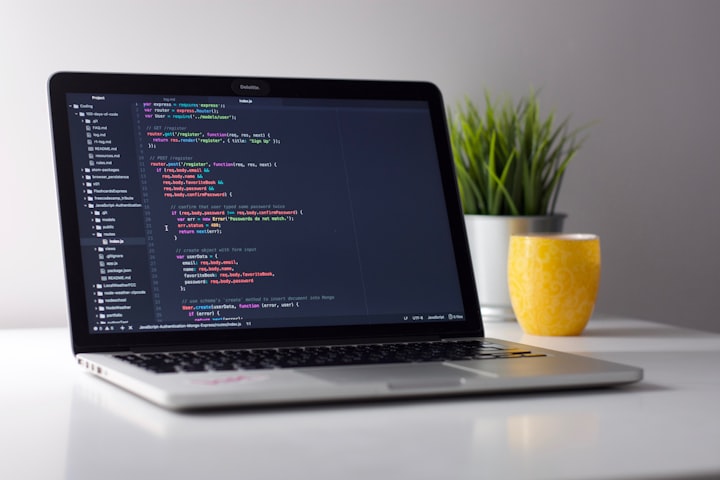Programming Languages
History, Learning Techniques

What is Programming Language?
A programming language is a formal language designed to express computations that can be performed by a computer. It provides a way for programmers to write instructions or commands that a computer can understand and execute. Programming languages are used to create software, mobile apps, websites, games, and many other types of programs. There are many different programming languages, each with its own syntax, semantics, and programming paradigms. Some popular programming languages include Java, Python, C++, JavaScript, and Ruby. Each language has its own strengths and weaknesses, and is often chosen based on the specific needs of a project.
History of Programming languages:
Programming languages have evolved significantly since the first electronic computers were built in the mid-20th century. Here is a brief history of programming languages:
1. Machine Language (1940s-1950s): The first programming languages were machine languages, which consisted of binary code that only computers could understand.
2. Assembly Language (1950s-1960s): Assembly language was introduced to simplify the process of writing machine language programs. It uses mnemonics to represent machine language instructions.
3. Fortran (1957): Fortran (FORmula TRANslation) was the first high-level programming language designed for scientific and engineering applications.
4. COBOL (1959): COBOL (COmmon Business Oriented Language) was developed for business applications and became one of the most widely used programming languages of the 1960s.
5. Lisp (1958): Lisp (LISt Processing) was one of the first programming languages to support recursion and was designed for symbolic computation.
6. BASIC (1964): BASIC (Beginner's All-purpose Symbolic Instruction Code) was designed for beginners and was one of the first programming languages to be widely used on personal computers.
7. C (1972): C was developed as a general-purpose programming language and became widely used for system programming, especially on Unix systems.
8. Pascal (1970s): Pascal was developed for teaching programming and was widely used in academic settings.
9. Ada (1980s): Ada was developed for the US Department of Defense and was designed for safety-critical applications.
10. C++ (1983): C++ was developed as an extension of C and introduced object-oriented programming concepts.
11. Java (1995): Java was developed by Sun Microsystems and was designed to be platform-independent, making it popular for web and mobile applications.
12. Python (1991): Python was developed as a general-purpose programming language with a focus on simplicity and readability.
13. Ruby (1995): Ruby was developed as a general-purpose programming language with a focus on productivity and elegance.
14. JavaScript (1995): JavaScript was developed by Netscape as a scripting language for web browsers and is now widely used for both client-side and server-side web development.
15. Swift (2014): Swift was developed by Apple as a successor to Objective-C and is now the primary programming language used for iOS and macOS applications.
These are just a few examples of the many programming languages that have been developed over the years. Each language has its own strengths and weaknesses, and programmers choose the best language for their specific needs.
How to Learn programming languages easily
Learning a programming language can be challenging, but there are several things you can do to make the process easier:
Start with a simple language: If you are new to programming, it is best to start with a simple language like Python or JavaScript. These languages have easy-to-learn syntax and a large community of users who can help you when you get stuck.
Use online resources: There are many free online resources available for learning programming languages, including tutorials, videos, and forums. Websites like Codecademy, Udemy, and Coursera offer free or low-cost courses on various programming languages.
Practice coding: Practice coding as much as possible. You can start with small coding challenges or simple projects and gradually work your way up to more complex tasks. The more you practice, the more you will learn.
Learn by doing: Instead of just reading about programming concepts, try to apply them in real-world scenarios. For example, you can build a website, a mobile app, or a game to practice your skills and gain experience.
Find a mentor or join a community: Joining a programming community or finding a mentor can help you learn more quickly and get feedback on your work. You can also learn from others' experiences and mistakes.
Don't be afraid to make mistakes: Programming is all about trial and error. Don't be afraid to make mistakes, as they are an essential part of the learning process. Analyze your mistakes, learn from them, and keep moving forward.
Remember, learning a programming language takes time and effort. Be patient, stay motivated, and keep practicing, and you will eventually master the language you are learning.





Comments (1)
Thank you for the info. I'm just starting to learn programming, such basic knowledge is important for me, and I also found types of programming languages https://www.programmingassignment.net/blog/types-of-programming-languages/ here is a lot of useful information for programmers of different experience